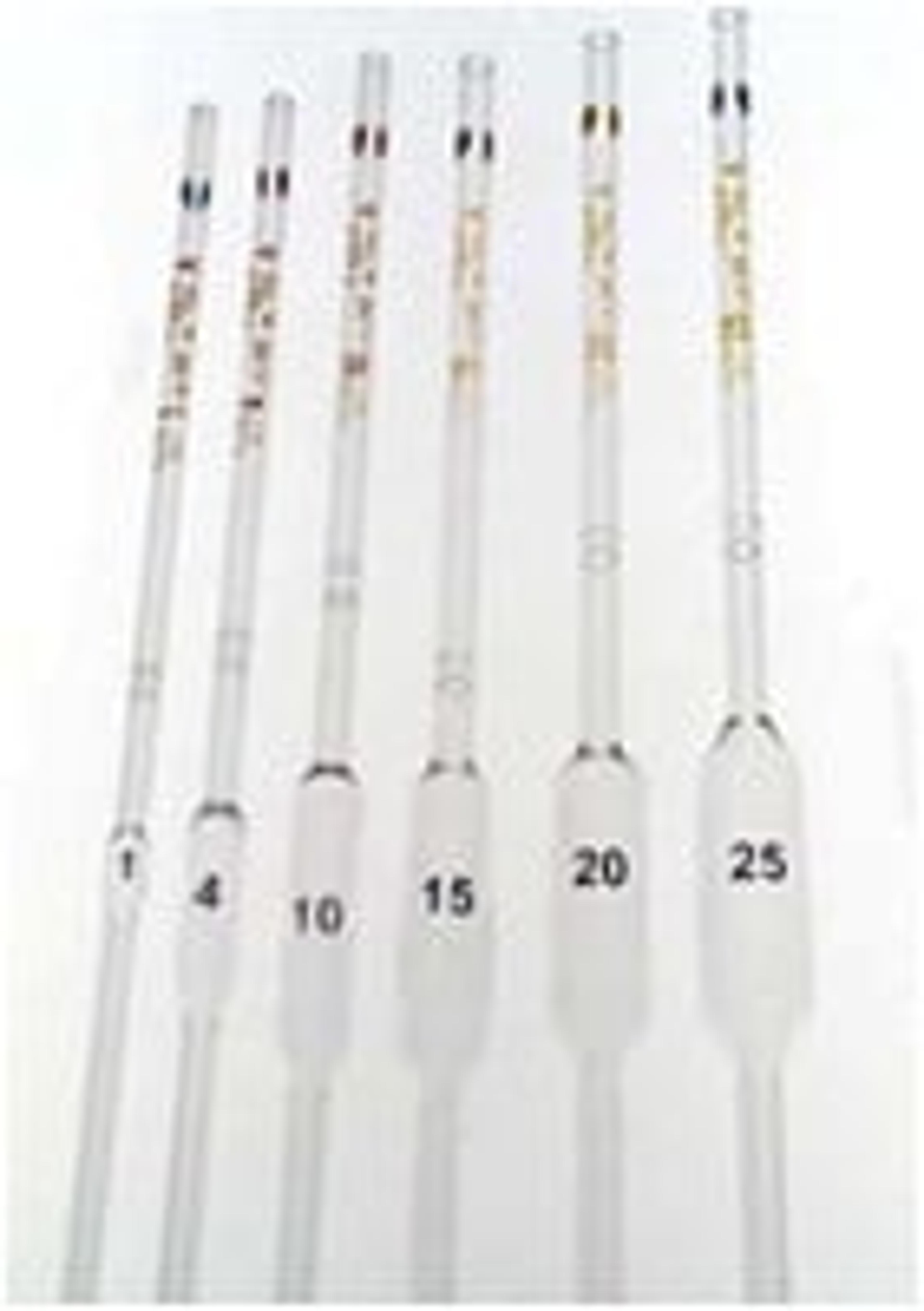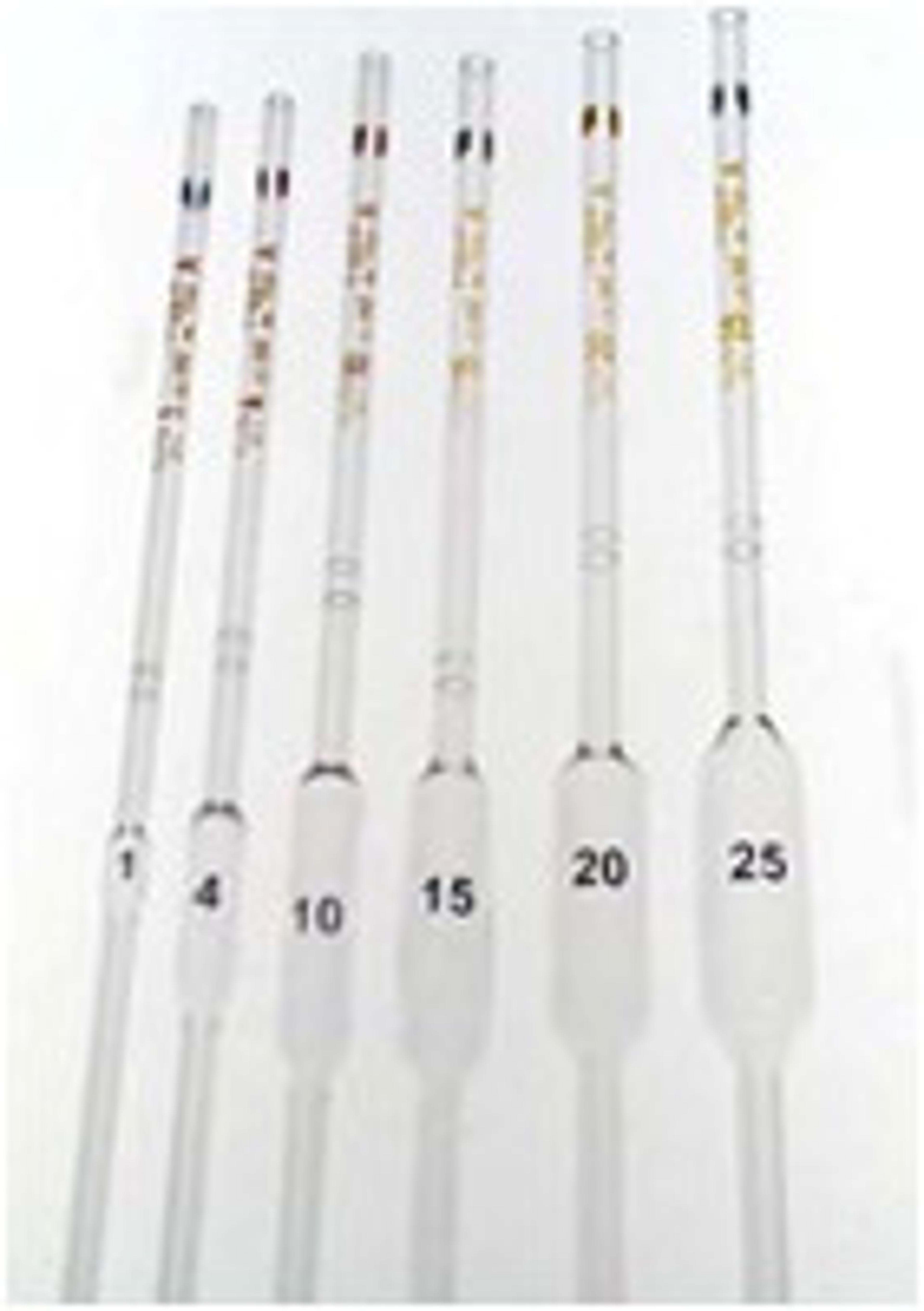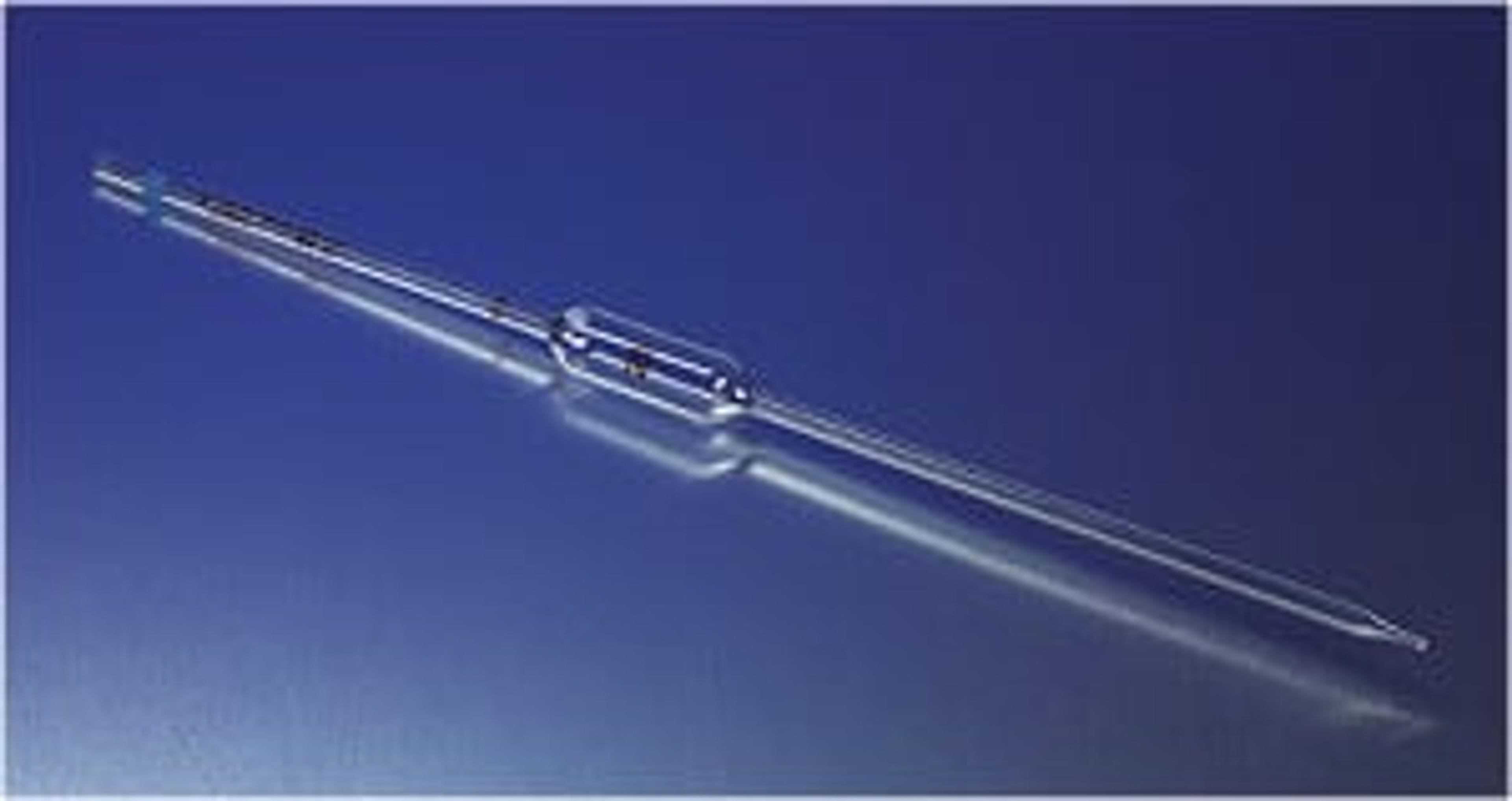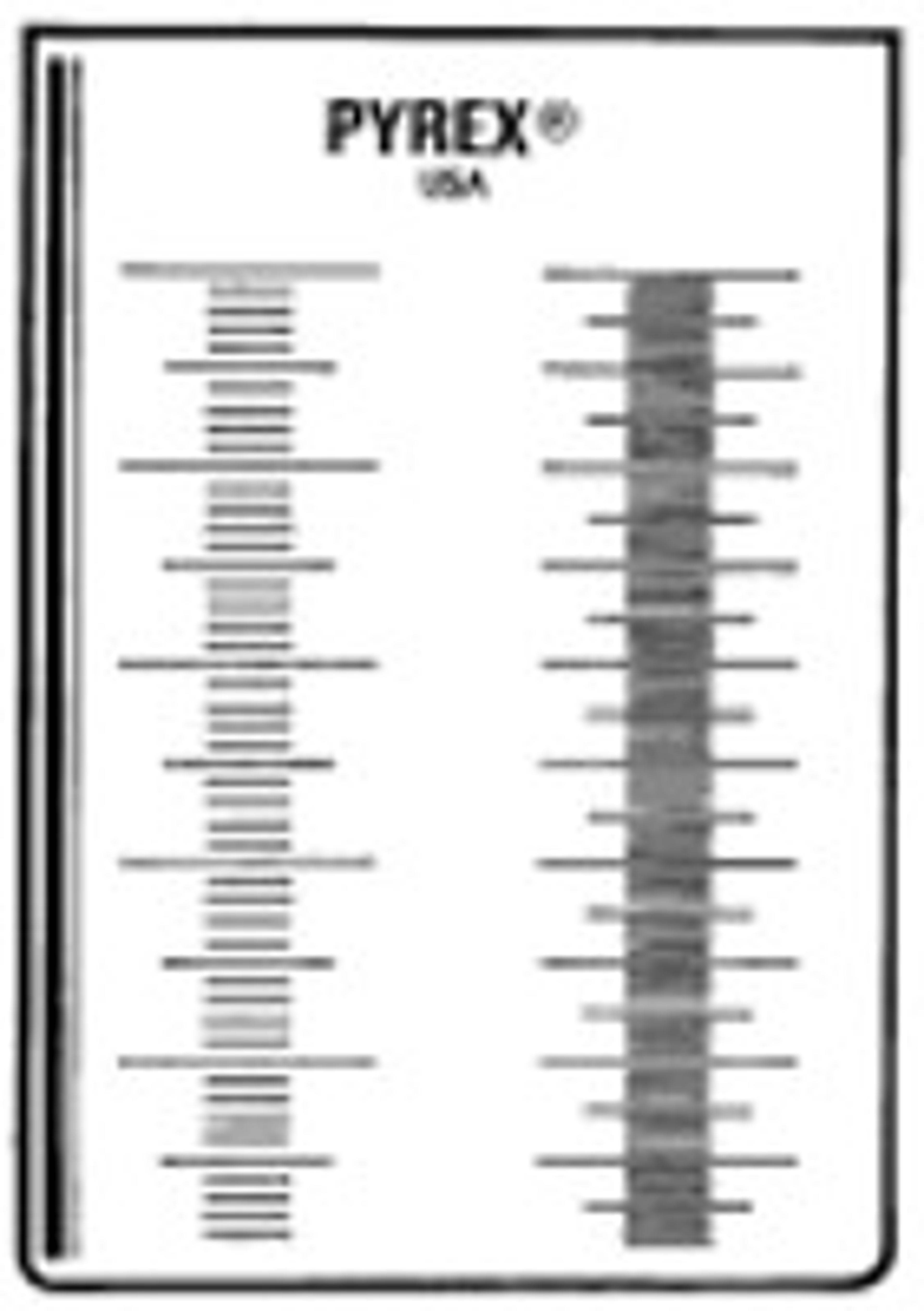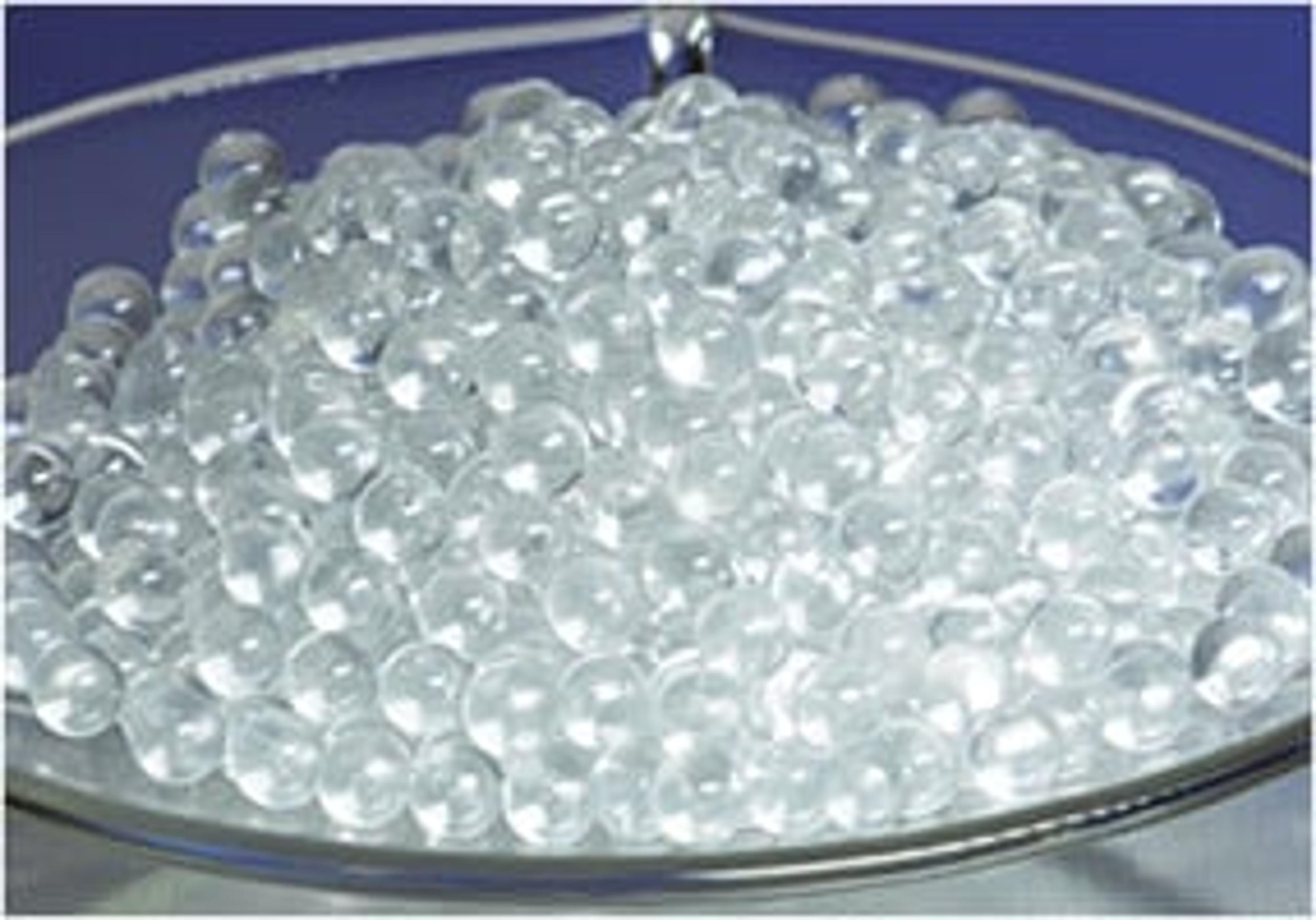PYREX® 10 mL Volumetric Pipets, Class A, TC/TD, Color-Coded, Colored Graduations
Corning Life SciencesThese precision 10 mL PYREX® volumetric pipets are manufactured and calibrated (TC - bottom line) and To Deliver (TD - top line) to specifications for Class A volumetric ware. Pipets are color-coded with colored graduations and calibration lines enameled onto the glass.

